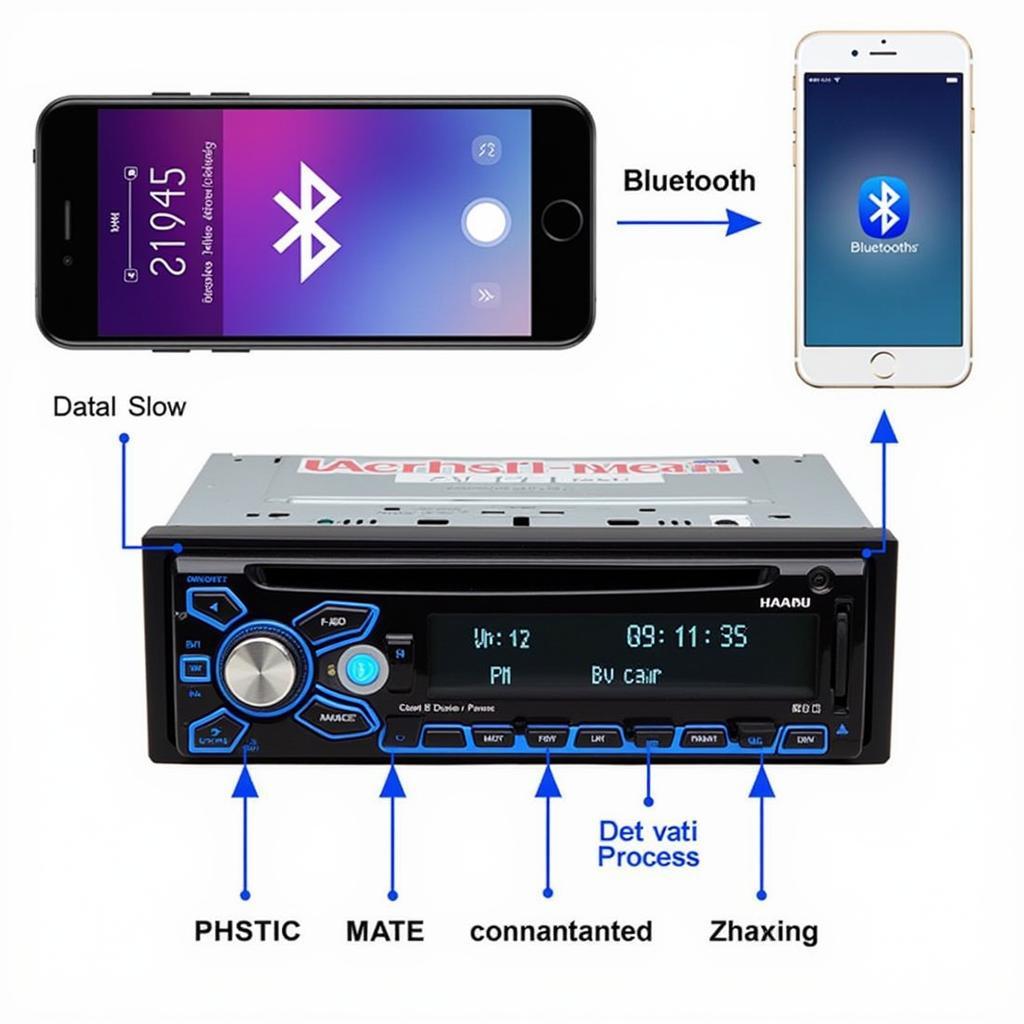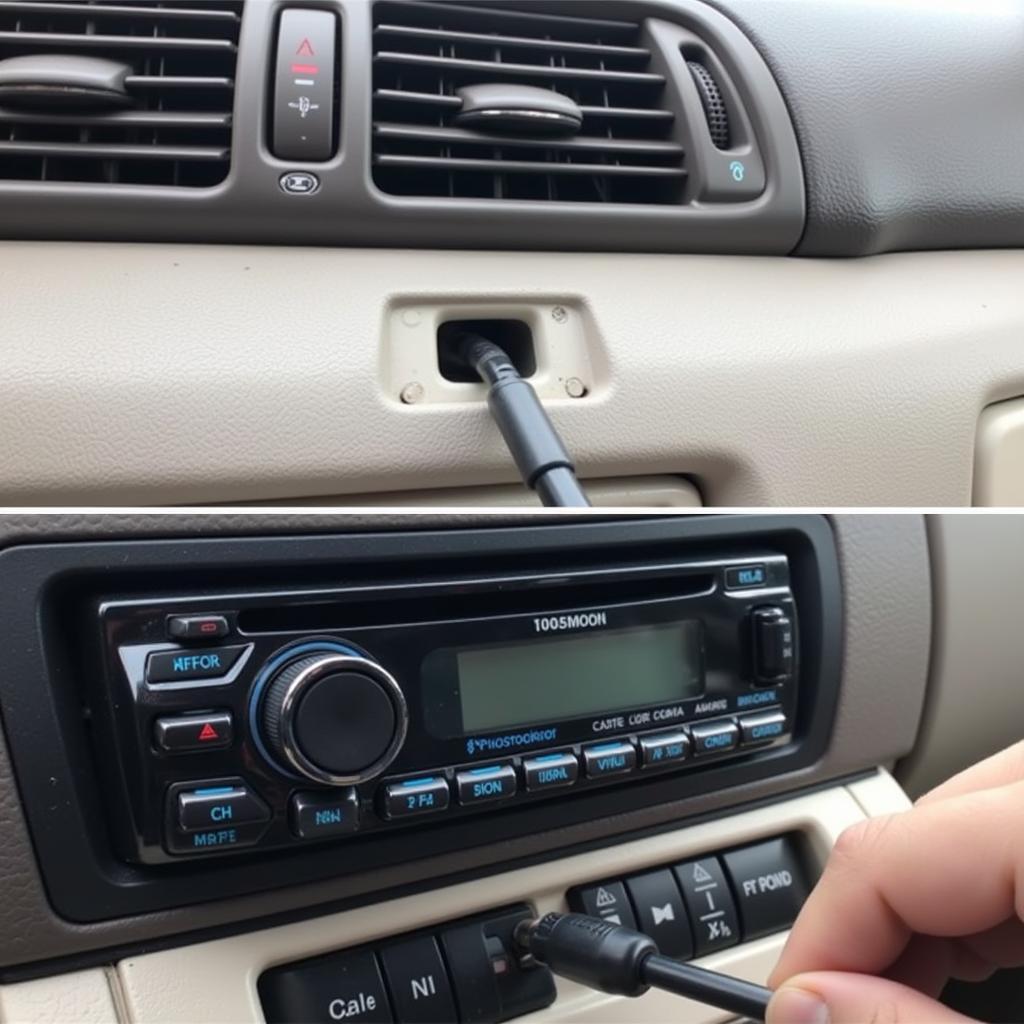A flat car battery voltage can be a frustrating experience, leaving you stranded and unable to start your vehicle. Understanding the causes and solutions can help you quickly get back on the road. This article will delve into the reasons behind a flat car battery voltage, offer troubleshooting steps, and provide guidance on preventative measures.
A dead battery is often the first suspect when your car won’t start. But what exactly causes a “flat” car battery voltage? Several factors can contribute to this issue, ranging from simple oversight to more complex electrical problems. We’ll explore these in detail to help you pinpoint the culprit and implement the right solution. After reading this guide, you will be better equipped to handle a flat car battery situation and potentially avoid it altogether. If your VW Passat is experiencing brake issues, consider reviewing information on common brake warnings. You can learn more about the VW Passat stop brake fault warning light for specific details.
Understanding Flat Car Battery Voltage
A car battery’s voltage should ideally be around 12.6 volts when the engine is off. A reading significantly lower than this, say 12.2 volts or below, indicates a flat or discharged battery. This low voltage prevents the starter motor from cranking the engine, resulting in a no-start condition.
Common Causes of a Flat Car Battery
- Leaving Lights On: This common oversight can drain your battery overnight. Interior lights, headlights, or even a trunk light left on can quickly deplete the battery’s charge.
- Parasitic Drain: Even when the car is off, certain electrical components continue to draw a small amount of power. A faulty component or wiring issue can lead to excessive parasitic drain, gradually discharging the battery.
- Extreme Temperatures: Both extreme heat and cold can affect battery performance. Cold temperatures can slow down the chemical reactions within the battery, reducing its ability to hold a charge. Excessive heat can accelerate evaporation of the battery fluid, shortening its lifespan.
- Old Age: Car batteries have a limited lifespan, typically 3-5 years. As a battery ages, its internal components degrade, reducing its capacity to hold a charge.
- Alternator Issues: The alternator recharges the battery while the engine is running. A failing alternator will not charge the battery properly, eventually leading to a flat battery voltage.
- Corroded Battery Terminals: Corrosion on the battery terminals can impede the flow of current, preventing the battery from charging or discharging effectively.
Troubleshooting a Flat Car Battery
Here are the steps you can take to troubleshoot a flat car battery:
- Check the Battery Voltage: Use a multimeter to check the battery voltage. A reading below 12.2 volts indicates a flat battery.
- Inspect the Battery Terminals: Look for corrosion on the battery terminals. If present, clean the terminals with a wire brush and baking soda solution.
- Jump Start the Car: If the battery is flat, try jump-starting the car using another vehicle or a portable jump starter. If the vehicle starts, it is likely your car’s alternator is charging normally after you’ve given the battery a jump.
- Check the Alternator: Once the car is running, check the voltage at the battery terminals. A reading between 13.5 and 14.5 volts indicates the alternator is charging properly. If the voltage is below this range, the alternator may be faulty.
If you experience a brake fault warning light on your VW Passat, it’s essential to address it immediately. You can find more information about this specific warning light here: vw passat brake fault warning light.
Preventing a Flat Car Battery
- Turn Off Lights: Double-check that all lights are off before leaving your vehicle.
- Minimize Accessory Use: Limit the use of power-hungry accessories like the radio and air conditioning when the engine is off.
- Regular Battery Testing: Have your battery tested regularly, especially during extreme weather conditions.
- Clean Battery Terminals: Keep the battery terminals clean and free of corrosion.
- Address Parasitic Drain: If you suspect a parasitic drain, have a professional mechanic diagnose and repair the issue.
For information on other VW related brake issues, check out resources on the vw passat abs brake warning light.
Conclusion
A flat car battery voltage can be a nuisance, but understanding the causes and solutions empowers you to address the issue effectively. By following the troubleshooting steps and preventative measures outlined in this article, you can keep your car battery in good condition and avoid being stranded with a dead battery. Remember to regularly check your battery voltage, especially during extreme temperatures. Having a basic understanding of flat car battery voltage ensures you’re prepared for this common automotive issue. If your VW T5 has a brake pad warning light, this guide: vw t5 brake pad warning light can offer assistance.
FAQ
-
What is the ideal voltage for a car battery? Around 12.6 volts when the engine is off.
-
How can I tell if my alternator is bad? If the battery voltage is below 13.5 volts when the engine is running, the alternator may be faulty.
-
How often should I replace my car battery? Every 3-5 years, depending on usage and climate.
-
Can I jump-start my car with a portable jump starter? Yes, most portable jump starters are designed for this purpose.
-
What causes parasitic drain? A faulty electrical component or wiring issue can cause parasitic drain.
-
How can I prevent my car battery from freezing in cold weather? Keep the battery fully charged and park your car in a garage if possible.
-
What should I do if my car battery keeps dying? Have a mechanic diagnose the problem to identify the underlying cause. You may want to read about the 1970 vw beetle brake warning light for classic VW issues.



